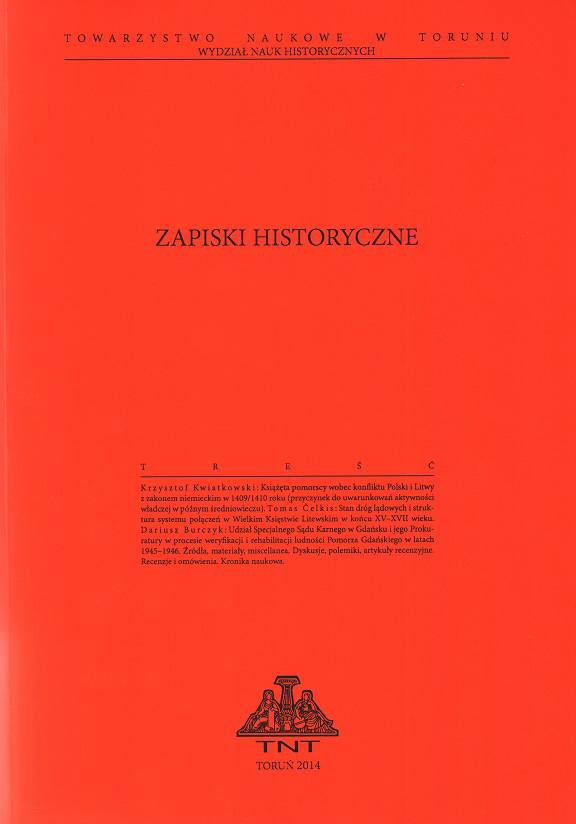
We kindly inform you that, as long as the subject affiliation of our 300.000+ articles is in progress, you might get unsufficient or no results on your third level or second level search. In this case, please broaden your search criteria.

The end of the World War I, the peace treaties signed there and the creation of the League of Nations, were meant to ensure a peaceful co-existence of the international community. The very same allied powers, which during the peace conference in Paris, France, determined the creation and the shape of borders of both new and existing states, assumed the role of guarantors of such a co-existence. Executing the role they imposed on the perpetrators of that horrific war a number of limitations, mainly with respect to armaments. It is noteworthy that the allied powers barred Bolshevik Russia from talks which was tantamount to its exclusion from the political life on the European continent. As it turned out, that great body of politicians and policy-makers did not avoid mistakes which in diplomacy â just like in football, to use the famous adage â, could, and in fact did, come back to haunt them. The whole world, and Europe in particular, after twenty years full of political turmoil both at the state and regional levels, learned that whatever is covered by and signed in the multilateral or bilateral agreements entails responsibility. Unfortunately, Poland was among the countries that learned their responsibility the hard way, and paid a huge price for such tuition. The interwar years were a time when Poland was trying to find its place on the political and military map of the continent of Europe, knowing well that the only potential ally to back its maritime security up was either the United Kingdom or France. Sadly, the choice finally made proved somewhat unfortunate. At this point, the following question must be asked: If not them, then who? Even in hindsight, answering this question is not an easy task; it is enough to say that the political and military situation in the Baltic Sea region in the interwar period was extremely complex. The Polish Ministry of Foreign Affairs enjoyed little room for maneuvering in its search for allies. Someone once famously said that the allies should be first sought in one’s neighborhood, but the saying was unknown to the Polish decision-makers of the time. The effects of their actions proved disastrous for Poland as tested by the leaders of the neighboring states, that is Germany and the Soviet Union.
More...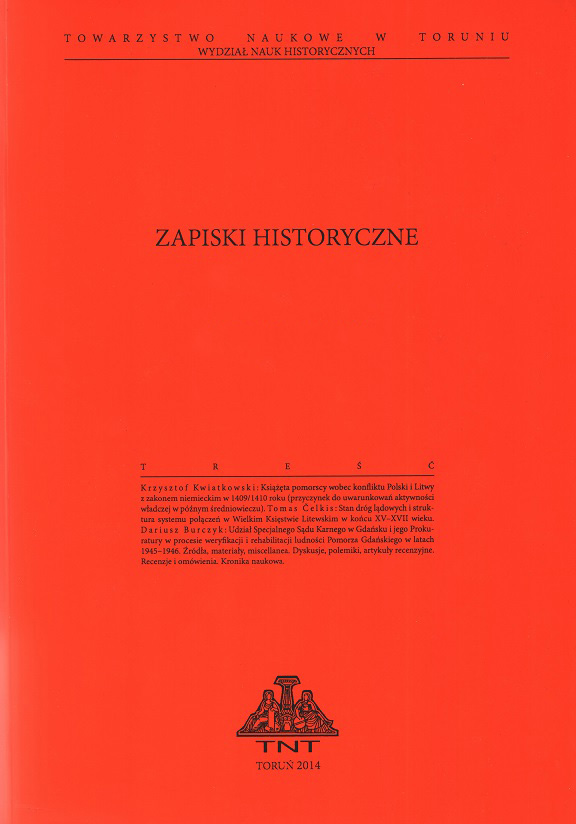
The article addresses an important but little-known issue of the conflict over the demarcation of the border between Estonia and (Soviet) Russia in the years 1917–1920, which was important for the international order in North-Eastern Europe after the First World War. The dispute over this matter was much broader than just bilateral, as the normalization of the situation in the Baltic region conditioned the possibility of extending the international order established by the Treaty of Versailles to Eastern Europe. This issue has not received a separate monograph so far, although it was addressed in historical publications, especially in the countries directly concerned. The analysis of the state of research, confronted with primary sources, constitutes the base for the article. After the Bolshevik Revolution of 1917, Estonia quickly became an object of interest for the Bolsheviks, which almost ended up with the republic losing its independence. However, the politicians of the newly born Republic of Estonia showed great political skills by manoeuvring between Germany, the White and Red Armies, obtaining British aid and establishing military cooperation with Latvia, which was equally threatened. However, it was the Polish-Soviet War, which ended with the defeat of the Red Army, that turned out to be crucial. During disputes with the Whites and the Bolsheviks with regard to demarcation, Estonia successfully, at least in a short-term perspective, defended its historical rights to the regions of Narva and Petseri against its aggressive neighbour. From the point of view of diplomatic possibilities, the Estonians achieved everything that was achievable. The peace treaty signed in Tartu in 1920 ensured ‘perpetual guarantees’ which, however, lasted only for less than two decades.
More...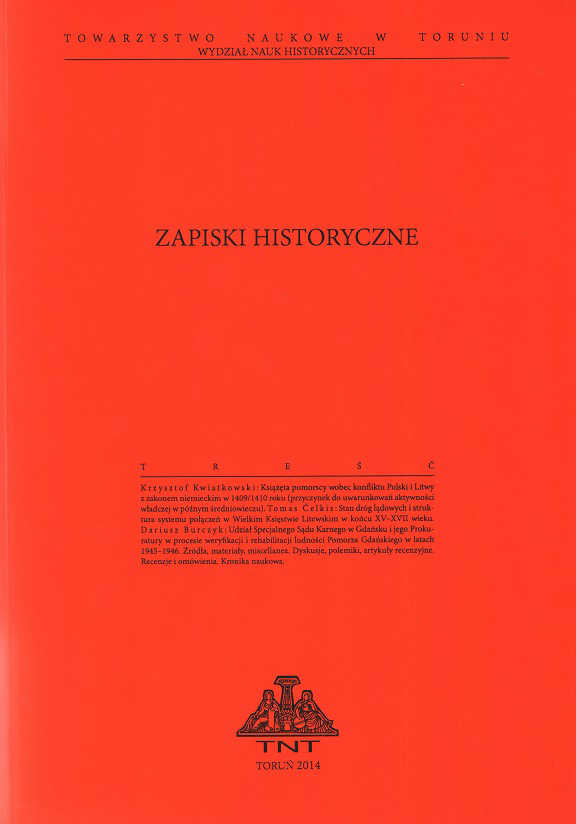
The attire characteristic for peasants was described by ethnographers from the early nineteenth century, and the interest in folklore itself transformed from amateur item collecting to an academic discipline, namely ethnography. Researchers were intrigued by hand-made folk costumes, which contrasted with the factory-made clothing of the urban population. As the political importance of the peasantry grew, stylised folk costumes became an element of regional and ethnic identity. The motif of peasant culture found its way into global literature and the folk elements into political propaganda of the twentieth century. At the same time the origin of folk costumes and their design arouses controversy among researchers. Are they reconstructions of the past or perhaps ideologically motivated constructs? The article presents this issue on the example of a Kashubian costume created according to the concept of Professor Bożena Stelmachowska (1889–1956). On the basis of previously unexplored descriptions of peasants’ appearance contained in arrest warrants from the first half of the nineteenth century, the sources and research paradigm, which became a basis for the creation of the model Kashubian attire in 1954–1959, have been subjected to criticism. The concept adopted by the older scholarship was not confirmed as no primary sources (material artifacts, iconographic representations, written descriptions, etc.) were found. The similarity of clothes worn by Kashubians with clothes worn by other peasants was demonstrated, and so was the influence of military uniforms on men’s clothes. The model of Kashubian costume proposed by Stelmachowska should be treated as an intellectual construction that reflects certain trends in folklore studies of the time and a response to ideological and propaganda needs that arose in Pomerania after 1945.
More...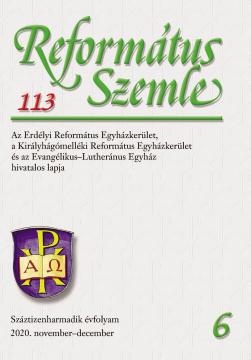
The congregations of the Reformed Church District of Királyhágómellék and Transylvania replaced the older hymnbooks twenty years ago. The replacement of 1921 hymnbook, previously used in the Partium region, and of the 1923 hymnbook used in Transylvania, opened a new chapter in the church singing practice. When comparing the origin and style layer of the songs in the two hymnbooks, the difference is striking, especially with respect to the 19th century melodies and the amount of 18–19th century ad notam songs in the 1921 hymnbook. From a structural point of view, the Hungarian Reformed Hymnbook focuses mostly on the hymns of the Reformation era and the German choral melodies, quantitatively closely followed by the Anglo-Saxon and Romantic hymns. The other valuable medieval, baroque and 20th century hymns are present in a merely symbolic proportion. During a hymnbook revision, it is not enough to drop rarely used or undervalued hymns. Rather, hymns with weakened influence need to be replaced. This is how we should approach our new hymnbook published nearly a quarter of a century ago. Its substantially new material should be regarded as a “profit” that needs to be discovered repeatedly and adopted in our worship services.
More...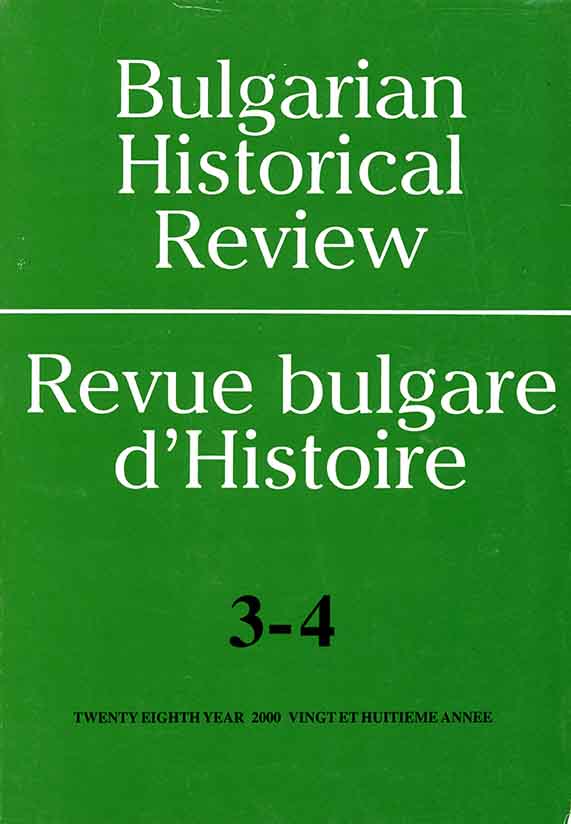
![„Ludzka twarz” górnośląskich robotników w okresie międzywojennym
[Rec. Dariusz Zalega: „Śląsk zbuntowany”. Wołowiec 2019]](/api/image/getissuecoverimage?id=picture_2020_60181.jpg)
The book Śląsk zbuntowany (‛The rebellious Silesia’) by Dariusz Zalega proposes a new way of writing about the workers’ movement, which is both approachable and devoid of anticommunist sentiment. The author takes the readers on a journey with blue-collar workers originating from Upper Silesia — volunteers forming the International Brigades, participating in the Spanish Civil War of the years 1936—1939 on the side of the Popular Front. Apart from the description of the fighting itself, a lot of space in the book was devoted to circumstances leading the protagonist to Spain. A brief outline of fates of those who managed to survive the clashes with General Francisco Franco’s army is also presented.
More...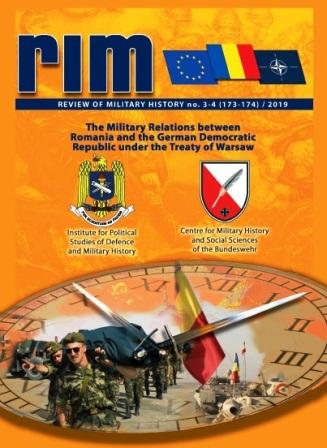
On March 3, 1921, the Convention on Defensive Alliance was signed between the Kingdom of Romania and the Republic of Poland. This was to become a key pillar in the overall efforts leading to the establishment of the first regional defence system in Central-Eastern Europe, which would be further extended by integrating the Little Entente (1921) and the Balkan Entente (1934). The Romanian-Polish alliance was the result of a longstanding strategy developed by Bucharest and Warsaw based on practical considerations imposed by both common interests and shared security needs, as well as by the growing uncertainty of the geopolitical order newly emerged at the end of the First World War. The new strategic map of Europe shaped at the Paris Peace Conference forced the two states to identify different forms of cooperation in the field of security and defence to tackle the challenges of the new regional geography and secure the postwar territorial status quo. Various regional projects developed by Romania and Poland in the aftermath of the Great War facilitated this goal. The main concern was to find a counterweight against the danger of a revanchist Germany and a rising Bolshevik threat but, also important, to prevent a possible alignment between Germany and Bolshevik/Soviet Russia. Under these circumstances, the Romanian-Polish alliance was presumed to be a central component of a potential strategic and military construct imagined by Romania and Poland. Despite the final outcome, the idea of the bilateral defence alliance demonstrated an accurate understanding of the geopolitical realities that required a close defensive partnership between Romania and Poland as the key factor in ensuring the defence along the Eastern flank.
More...
Polish foreign policy with Romania during the interwar years, due to the Soviet threat, was based on the military alliance with Romania. As a result, the Polish military and political services were interested in the Romanian Army and its role in the domestic security situation that permitted the continuity of this alliance. Generally, Poles did not give good marks to the Romanian Army. In their opinion, Romanians disregarded the danger from the East and the security of Bessarabia, overestimated the Hungarian threat, and had too much confidence in France. Poles also pointed to the integration problems of “Great Romania,” which weakened its value as an ally. On the other hand, Polish perceptions always contained considerable optimism and emphasized realistically that the situation was improving in many respects. Nevertheless, contemporary evidence suggests that Poland needed Romania more than Romania needed Poland.
More...
Romanian-Polish relations had an evolving dynamic in the two decades of the interwar period. If Romania remained, with small nuances, faithful to the idea of preserving the “status-quo” obtained through the peace treaties at the end of World War I, the Polish state of 1938-1939 had evolved differently from what it had been in 1920-1921.
More...
After the German occupation of Czechoslovakia, the United Kingdom proposed that European states should demonstrate unity by signing a joint declaration to oppose German expansion in Europe. The United Kingdom selected France, the Soviet Union, and Poland as its first partners. It was envisioned that Poland would effectively support Romania, which was under German economic pressure, through an alliance between the two countries. The proposed alliance included defence against an attack on the eastern borders of both countries, but the United Kingdom and France tried to get both countries to expand their eastern borders against Germany. Poland rejected this concept because it did not believe in the possibility of German aggression against Romania and preferred not to jeopardize relations with Hungary. For Romania, the proposed expansion of the alliance was not beneficial either. German-Romanian relations could have deteriorated and led Germany to support the territorial claims of Hungary and Bulgaria against Romanian territory. As a result, Poland and Romania chose to protect their own interests: Poland accepted British guarantees and then signed a bilateral agreement with the United Kingdom; Romania accepted British and French guarantees while ostensibly maintaining good relations with Germany.
More...
Romanian Foreign Minister Grigore Gafencu’s visit to Warsaw in March 1939 showed that both countries wanted to restore national cooperation. A far-reaching convergence of views on the international situation in Central and Eastern Europe became apparent at that time. Gafencu seemed to share Polish Foreign Minister Józef Beck’s views on the need for a Romanian-Hungarian agreement and the establishment of a bloc of states between the Baltic and the Mediterranean Seas. It could have been assumed that the envisaged Polish-Romanian alliance would have a significant impact on the further development of relations in this part of Europe. However, the occupation of the remainder of Czechoslovakia by the Third Reich on March 14, 1939, and the related mediation by Poland concerning the division of Transcarpathian Ruthenia between Hungary and Romania, not only turned out to be ineffective, but also led to far-reaching rifts between Warsaw and Bucharest. From then on, each ally would follow its own path until the outbreak of World War II.
More...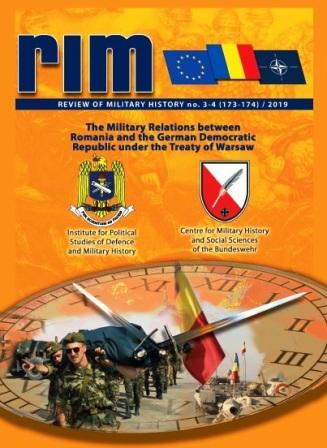
This study analyses the Romanian military system in the period between the two world wars, commonly known as the interwar period. During this time, it developed according to the experience of World War I, something that was very noticeable in the debates pertaining to the organization of the military body. In other words, Romania undeniably suffered from the “syndrome of the last war”. Another major influence was the French military model, which was adopted by the Romanian army in the period 1916-1918 and preserved during the interwar period. The military body has gone through several stages, consistent with the developments on the international stage. Thus, in the period 1919-1924, the military structures of unified Romania were brought together, a process not without its own challenges: the integration of a significant number of military personnel from the former Austro-Hungarian and Russian armies; the expansion of the military infrastructure in the territories that united with Romania in 1918; the creation of a legislative framework attuned to the new realities, etc. This was followed by roughly a decade in which the pace of the reforms was modest, meaning that the army suffered serious setbacks in terms of training and equipment. By the mid-1930s, concomitantly with the worsening of the international environment and the prospect of a new war, Romania launched a race against time for strengthening the army. However, the army was not able to avoid the dismantling of the country’s borders in the summer of 1940. Furthermore, it found itself in a humiliating position, being forced to withdraw from Bessarabia, Northern Bukovina, north-eastern Transylvania and from the Quadrilater without opposing any resistance.
More...
For the most part, the spring of 1920 marked the end of the actions of the Romanian army for the defence of the territory of Greater Romania following the decisions from Chișinău, Chernivtsi and Alba Iulia, but the insecurity at the eastern border required the forces deployed between Prut and Dniester to remain on high alert up until May 1921. In the early 1920s, the threats Romania had to face came in the form of the revisionist policies openly promoted by the USSR, Hungary and Bulgaria, which were countered with the creation of a system of alliances with the neighboring states, which complemented the existing alliance with France. This sense of security, which, in hindsight, proved short-lived, translated in decreased attention granted to the needs of the army. The 1930s, however, brought dramatic changes with the rise of the Nazi party in Germany. Naturally, all these shifts reflected on the Romanian General Staff, which was shaped according to the perceptions of the Romanian decision-makers at any given moment of the interwar period.
More...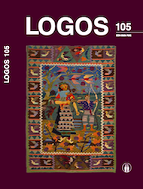
The article is dedicated to the 140th anniversary of the birth of Mykolas Romeris, the most famous and most deserving Lithuanian lawyer of all time. The article aims to reveal the development of the institute of administrative court in the world and in Lithuania by analyzing the content of M. Romeris’ monograph „Administrative Court“. The monograph „Administrative Court“ is written in a complex language. The reason for this is the lack of administrative law terms and studies in Lithuania. Moreover, it is obvious that the author himself, while writing this work, studied and tried to understand the phenomenon of administrative law and administrative justice.
More...
The artist Kazimieras Stabrauskas (Polish: Kazimierz Stabrowski, 1869–1929) was born in a landlord’s from Naugardukas family, in Kruplian, the Province of Grodno. After graduating from Białystok Real Gymnasium, he studied at the St. Petersburg Academy of Arts in 1887–1894. In 1894–1897, he continued his studies in Ilya Repin‘s studio. In 1897, he studied at Julian Academy in Paris. He traveled to the countries of the Middle East including Turkey, Lebanon, Syria, Palestine, Egypt, Tunisia. He also often visited the main cultural centers in the Western Europe. In 1903, he settled in Warsaw, where in 1904 he established the Warsaw School of Arts and headed it until 1909. During this period he closely cooperated with the members of the Young Poland (Młoda Polska) Movement, lectured to Mikalojus Konstantinas Čiurlionis, published articles on theosophy and occultism, promoted the idea of the Lithuanian art exhibitions. In 1907–1912, together with his wife Julia (who was born in Kaunas) he took part in the first six Lithuanian Art Society exhibitions. He painted a lot of landscapes, fantasies, figural compositions, and many portraits of starry-eyed women. The characteristic features of his works display symbolism, neoromanticism, impressionism, modernity, fiction, allegory, expressiveness, and esotery, tinted with mystery.
More...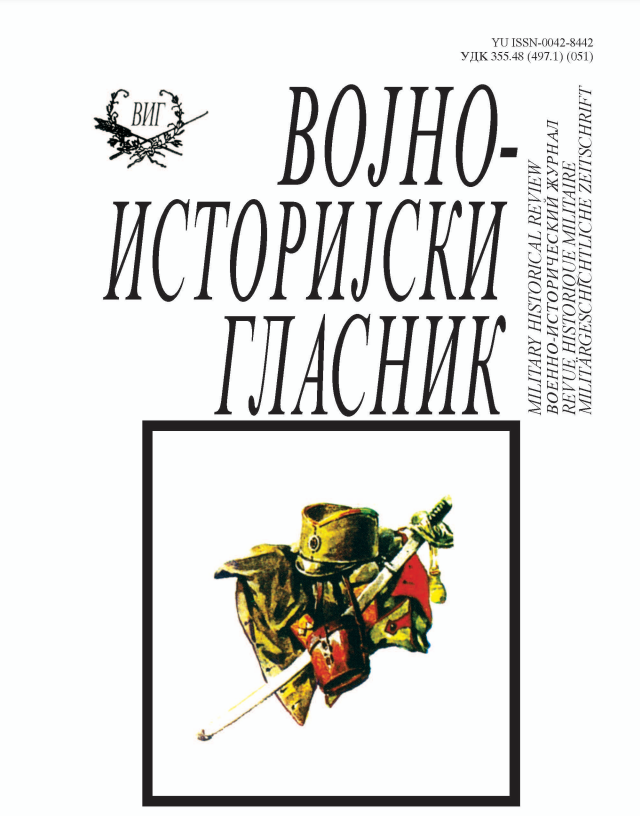
Bojan Simic, Milan Stojadinovic and Italy: between diplomacy and propaganda, Institute of Recent History of Serbia, Belgrade, 2019, 287 pages.
More...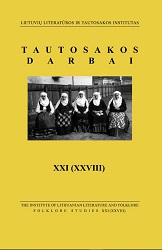
Prieš 70 metų savo veiklą pradėjo Lietuvių tautosakos archyvas. Čia skelbiami jo tarybos 1935–1940 metų posėdžių protokolai pateikia konkrečių duomenų, leidžiančių spręsti apie šios institucijos darbuotojų užmojus ir geriau suvokti tas sąlygas, kurioms esant pasiekta mums gerai žinomų rezultatų.
More...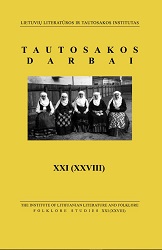
The subject of analysis in this article comprises folkloric motives related to death and funeral in the late Lithuanian military-historical folksongs. The scope of investigation embraces the songs that became popular approximately in the end of the 19th – beginning of the 20th century, chiefly related historically to the Russian–Japanese War and the World War I, in which Lithuanians had to participate as soldiers of the Tsarist Russian army. The main attention is paid in the article to the following folkloric motives of the songs: the seeing of the soldier off to the war and saying farewell to him; death in the battlefield, far away from home; the soldiers’ graves; the nameless mass burials; death without funeral. The farewell motives found in some of the examined songs contain reflections of certain rituals of farewell and seeing the man off to the war, existing in the traditional Lithuanian culture. The foreboding of death is very distinctly expressed here. In the late military-historical folksongs, image of the battlefield emerges as the specific space of death, becoming a popular folkloric motive.
More...
Review of: Daiva Vyčinienė - Naujas lietuvių folkloristikos baras: XX a. pirmosios pusės garsinė dokumentika
More...